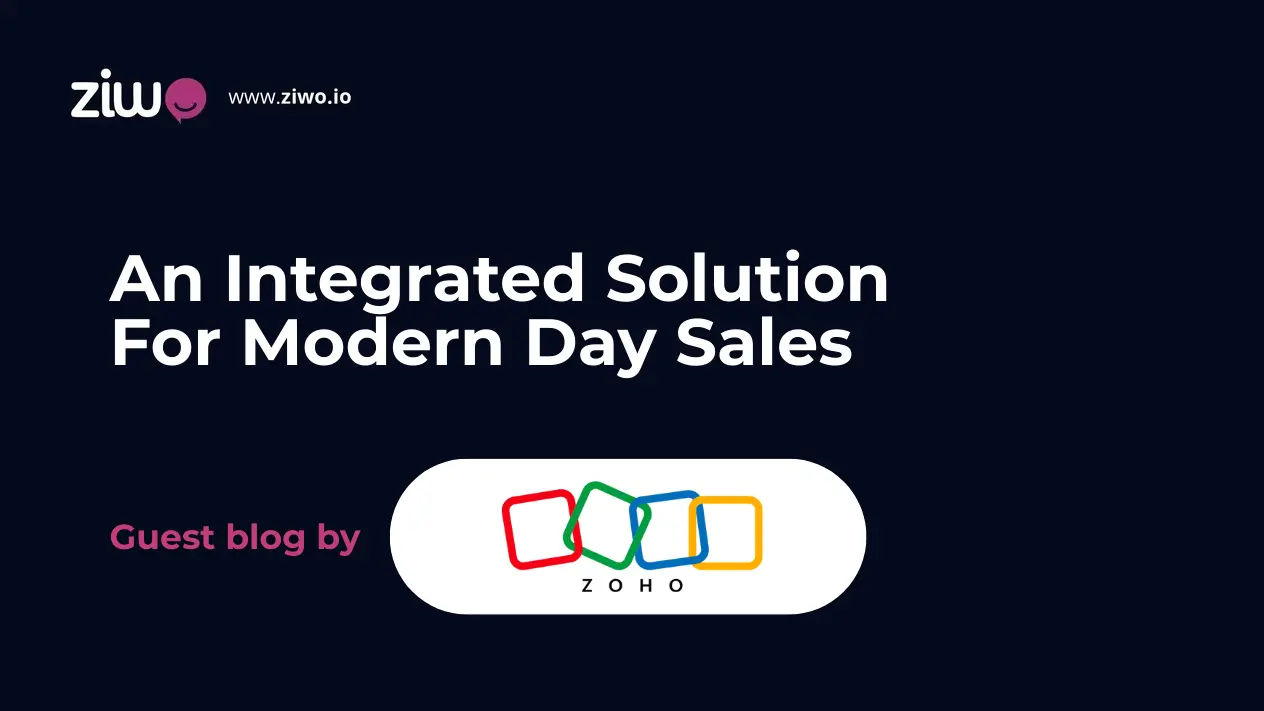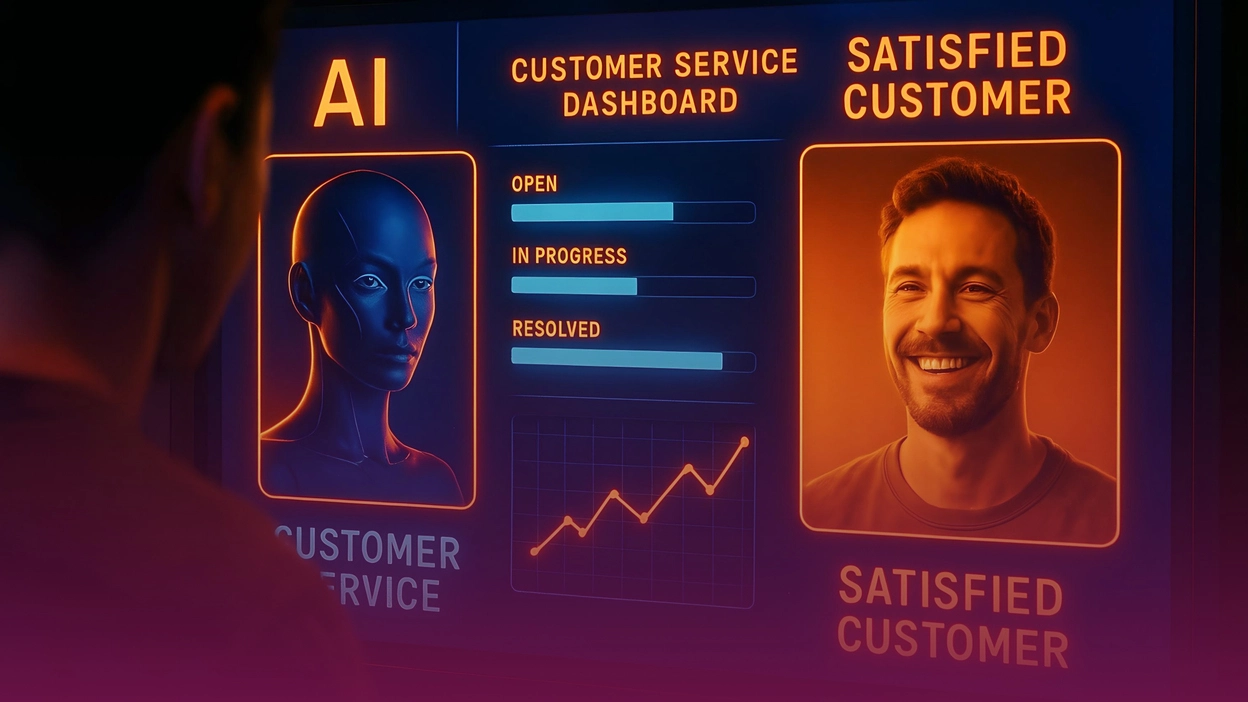What is Average Handle Time (AHT)?
Average handle time AHT is a vital call center metric that shows how much time, on average, it takes agents to resolve customer issues!
Every second matters, whether for an individual or a business resource. Similarly, time is a precious asset for call center agents and customers. Based on this fact, many customer service metrics have appeared, and the average handle time (AHT) comes at the top of the list!
The AHT has become a KPI that call centers monitor to determine whether an agent's performance meets expectations. It’s stated that a low average handle time results in a better customer experience.
As a call center supervisor, are you interested in best practices that ensure distinguished added value to customers?
Let’s have a quick tour of the definition of AHT and the benefits of applying it in your call center.
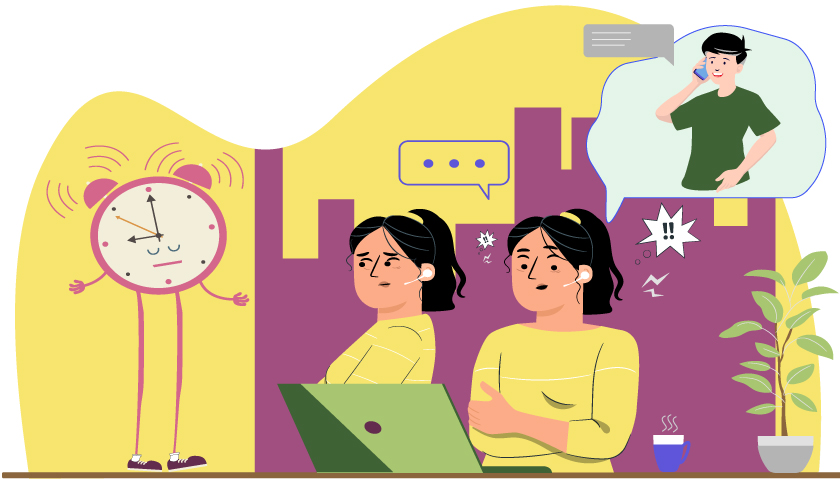
What Is the Average Handle Time (AHT)?
Average handle time is a standard that a call center utilizes to check its performance; it depends on four major factors:
- Average Talk Time (ATT)
- Average Hold Time (AHLDT)
- After Call Work (ACW)
In the past, the previous factors have always represented the AHT. However, today’s call centers are not only about calls. Emails, SMS, WhatsApp messages, social media message campaigns—the list of communication tools will never end and will increase continuously.
You might ask: “What is the ideal Average Handle Time (AHT)?”
Six minutes is the ideal average handle time for call centers that represent any industry in the world. Here are the average handle time industry standard values:
- Consumer/Business Services: 3.55 minutes
- Currency Exchange and Insurance Services: 4.01 minutes
- Government and Public Sector: 4.13 minutes
- Healthcare: 3.38 minutes out of 100 (3.38)
- Hospitality and Tourism Services: 3.11 minutes
- E-Commerce: 3.41 minutes
- Telecommunications: 2.56 minutes
Call centers play a significant role in how customers interact with a company, and they’re vital for businesses because Lower Average Handle Time generally translates into lower after-call work and lower hold times. With this in mind, lower average handle time will have a positive impact on customer experience, agent productivity, and overall contact center efficiency.
A key feature of modern contact centers is customer focus. By offering support services, companies seek to improve customer experience and increase the loyalty of partners, buyers, or service users.
Motivation and training have become guidelines for working with personnel. A simplified approach to reducing the average call processing time does not fit this concept. However, it would be wrong to refuse to measure and analyze AHT. There are effective ways to use this indicator to achieve a new level of unit development.
In other words, reducing the average handle time (AHT) can guarantee on-call customer satisfaction.
To put it differently, let us explore the definition of Average Handle Time and why this KPI dramatically impacts customer satisfaction and the overall efficiency of any contact center.
Let’s find out in which cases AHT is a perfect metric and when it becomes misleading!
Average Handling Time Meaning
AHT is the total time the call center consumes to resolve an issue or process a request submitted by a customer who has approached the center.
If you’re wondering how to measure AHT at your call center, here’s an example from which you can conclude the average handle time formula:
Example 1:
A call center at an all-in-one car maintenance service station received 50 calls in one day. The total time spent handling customers was 500 minutes. Customers were also left on hold for 150 minutes. Finally, the after-call work time was 350 minutes. Thus, the average handling time (AHT) equals 2 minutes.
- Average Handling Time Formula = (Talk Time + Total Hold Time + After-Call Tasks Time)/ Number of Calls
Note that:
You can calculate the average call handling time for any period, whether a day, a week, a month, a season, or even a year. It depends on the degree of accuracy your call center aims to achieve. As the number of calls increases, you must develop shorter periods to deliver more efficient results.
Average Handle Time Benchmark in Call Centers
The average handle time benchmark in call centers computes the absolute timeframe from the beginning of the phone conversation with the customer until the end of the interaction, covering the reason for the call.
To determine the average handle time that it takes for an agent to serve a customer, we should speak about the three components of the formula:
1) Average Talk Time (ATT)
It’s the average time a call center agent talks to a client—total talk time divided by the total number of calls.
2) Average Hold Time (AHLDT)
It’s the average time a client waits on hold when a call center agent tries to recover data, address an administrator, or transfer the client to someone else or a different department. In this case, Low Average Hold Time can improve consumer loyalty. Mathematically, it’s the total hold time divided by the total number of calls.
3) After Call Work (ACW)
After-call work (ACW), or Wrap Time or Post-Call Process, is the work or tasks call center agents perform after speaking to a customer. It measures the length of time it takes an agent to do the work associated with a call after it’s done. You can calculate it by dividing the total after-call work time by the number of calls.
You can use AHT as a KPI to check the performance of each call center agent. Even if six minutes is the ideal AHT for call centers, we believe, based on practical experience, a call center agent's AHT benchmark could range from 6 to 8 minutes as a safe zone. Below this range, more observations are needed, and exceeding that range might raise concerns about risking a call center's reputation.
Why Is Average Handle Time AHT Necessary for Your Call Center?

Average Handle Time is one of the most important key performance indicators (KPIs) used in every call center, and it should never be ignored:
The benefits of low AHT are numerous and have various dimensions, as follows:
- The Positive Interaction With Customers’ Expectations: Dealing with many calls quickly reflects on improving customer satisfaction and elevating their CSAT results.
- A Better Brand Image Delivery: Providing the customer or the lead with a comfortable experience where they receive the information they seek makes your customer service team one of the significant revenue engines in your company. However, it might also be a loser team; in that case, it needs a plan for training and development.
- Challenges and Call Lagging Factors Exploration: The increase of the AHT refers to issues and obstacles, which can be easily determined through call quality analysis.
- Boosting Company Growth: The increase in AHT guides you to optimize resource distribution in terms of time and human resources tasks, stimulating business growth without adding new assets.
- Determining the Absent Elements in Work: When your call center's average handle time is high, you must seek suitable solutions. A solution might be using better contact center software, providing an advanced training program for call center agents, offering more supportive customer follow-up via WhatsApp, or even building a comprehensive knowledge base.
What Are the Average Handle Time Application Flaws?
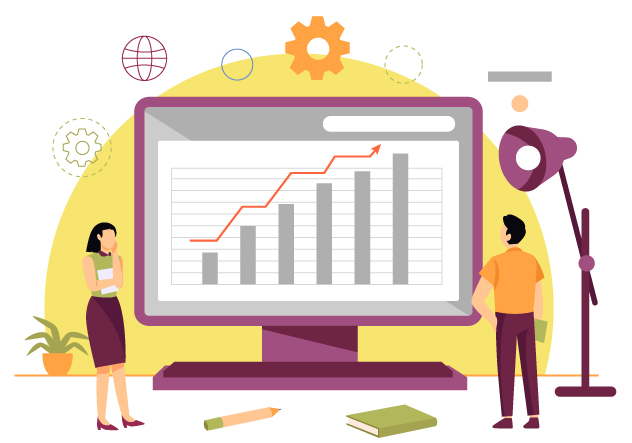
Things go much worse when you don’t apply the AHT formula correctly. These faults some experts might fall into accidentally:
- Dropping a term, which is a significant time, forming the equation, like ATT, AHLDT, or ACW.
- Not considering all of the calls during the targeted period, like missed calls, abandoned calls, unrecorded calls, etc.
6 Best Practices in Reducing Average Handle Time
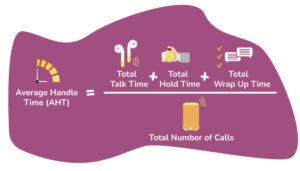
If you’re asking about “How to manage average handling time and reduce it,” follow these steps:
1- Continuous Development for Customer Education
If your business is part of SaaS, providing an evolving product or service, your relationship with the customer starts with their first transaction. He’ll need support from your team’s side.
That’s why the customer success team is key to leading him to the best practices for using your solution. So, always nurture the customer learning process to meet their goals.
Before launching every update or upgrade in your product, the customer should know how they’ll benefit from it to avoid having your new feature left out.
2- Building a Great Knowledge Base
The knowledge base is a significant source of information that customers can rely on while seeking answers. Thus, the customer won’t need to communicate with call center agents as long as they can find answers quickly, leading to a decrease in AHT.
This database should be promptly updated with all the necessary data (about customers, goods, operations, etc.). Each customer should have quick access to the essential data. This reduces the time required to search for the required information and allows your agents not to get distracted by low-priority tasks, leaving them to focus on the highest-priority tasks.
2- Providing Self-Service Options
Self-service options decrease the number of calls. How could that benefit your call center's average handle time?
Increasing the number of calls might reduce the average call handling time. In mathematics, the number of calls is found in the denominator of the formula, so an increase in this number decreases the whole AHT value. But in fact, this condition is different.
There's a direct relationship between the number of calls and every other term in the numerator. Simply put, many calls mean more talk time, longer wait time, and more time spent performing work after calls.
Then, we conclude that reducing the number of calls as much as possible reflects positively on the value of AHT. That's why self-service options are helpful, enabling customers to access the resolutions/queries themselves.
Studies have shown that most Millennial and Gen Z customers prioritize self-service options before calling or using any other communication platform.
3- Agents Performance Monitoring
By tracking the KPIs for every agent, you can quickly determine who’s doing well and who needs to develop more skills. Here is a list of the most effective KPIs you should consider with every call center agent and acceptable limits:
- Average Talk Time (ATT)
- Customer Service: Three to six minutes
- Technical Support: Six to ten minutes
- Sales /Telemarketing: Two to four minutes
- Number of missed calls
- Number of internal call transfers to other agents or departments
- Call abandonment rate
- From 2% to 5% of the total number of calls.
- Average waiting time in the call queue line.
- Retail: One to two minutes
- Financial Services: Two to three minutes
- Healthcare: Till 6.6 minutes
- Maximum call wait time
- A customer's maximum acceptable call wait time without affecting satisfaction is two minutes, and 80% of calls receive a response within the first 20 seconds.
5- Coaching Agents
When newly hired agents get well-trained, they will be familiar with all the tools used in the contact center before starting their customer interactions. Basic training is only the first step towards acquiring high qualifications.
Regular training, in addition to basic training, is necessary to improve performance indicators. Agents need help analyzing working situations and are encouraged to share experiences within the team. This will help employees optimize AHT while maintaining and improving customer service levels.
To improve their performance, coaching call center agents and guiding them to the suitable scripts and professional handling of every expected scenario they might face while interacting with customers.
Agents' coaching and performance monitoring let them feel appreciated. This drives them to stay with your business. Low turnover produces a strong employee base fully aware of the values and rich experiences customers should gain.
6- Using Advanced Contact Center Software
Advanced contact center technology will help the agents perform their duties in a better way, and it will help achieve the KPI’s on hand:
A. IVR Technology (Interactive Voice Response technology)
The IVR service enables contact centers to record automated voicemail messages and route calls. You can use IVR also in other aspects of business such as website, database and CRM integration, reporting, and bill processing.
It’s easy to implement, and you can scale it up as your growth occurs. Hence, you can reduce your time and the contact center's overall AHT.
B. Smart Routing Technology
With real-time quality of service analysis, you can improve your service response time and automatically connect your customer with the right agent. Innovative routing technology improves client communication by automatically answering calls and directing them to the individual, extension, or department based on your rules and criteria.
With call routing, customers can reach the right agent or department they need in the blink of an eye, which will guarantee that AHT is even shorter.
This is a win-win and straightforward way to reduce call processing time. Thanks to an optimized routing system, subscribers will wait less in the call queue.
In addition, it allows you to immediately connect the customer with the agent in charge, without additional transitions.
C. CRM Integrations
Connecting your contact center software with a CRM system will improve the workflow and shorten the AHT.
Average Handle Time Analysis Drawbacks
One of the significant drawbacks of AHT analysis is that it can be misleading when you find that the AHT level is as low as you seek. Before you think that it’s clear sailing, check these situations to avoid:
- Call center agents receive a vast number of calls, but many are abandoned or missed. Back to the AHT formula, the denominator’s value is small; thus, it’s expected that AHT is low. Here, AHT doesn’t clarify the whole situation.
- When you share the targeted low AHT, some agents might rush the calls without resolving the customer’s problems. So, the customers feel they don’t have the proper service. As a result, AHT gets lower, as do customer satisfaction rates.
Why Do You Need to Make A Balance Between AHT and Customer Satisfaction?
Improving average call handling time is one key element of creating an effective contact center. It's also a key metric that improves support services in many ways.
First, smart AHT optimization improves customer satisfaction. The contact center eliminates annoying issues like long call waiting queues, call transfers, and long on-hold times. This way, issues are resolved faster and more successfully, which will surely please your audience.
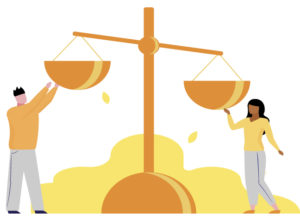 A balance between AHT and customer satisfaction
A balance between AHT and customer satisfactionAHT is a tricky metric, the lower the number of AHT, the better your organization is doing at serving clients. That means the agents are helping clients efficiently in a reasonable amount of time.
Optimization of The Entire Workflow
Employee monitoring, call analytics, and real-time assistance help increase productivity. Ensuring quick and effective internal communication between employees is essential. Therefore, the best solution is to create an internal chat to exchange instant messages. Finally, reducing the time spent on the most repetitive, routine tasks helps increase productivity.
In addition, improving AHT automatically implies an increase in work efficiency. This also applies to other aspects, from enhancing employee skills to automating business processes. Some of these activities require an initial financial investment. However, they yield desired results and generate long-term profits for the company.
Why don’t you look closely at the platform that helps enterprises accelerate their performance and provide a better customer experience?
Register now to get a free demo!



